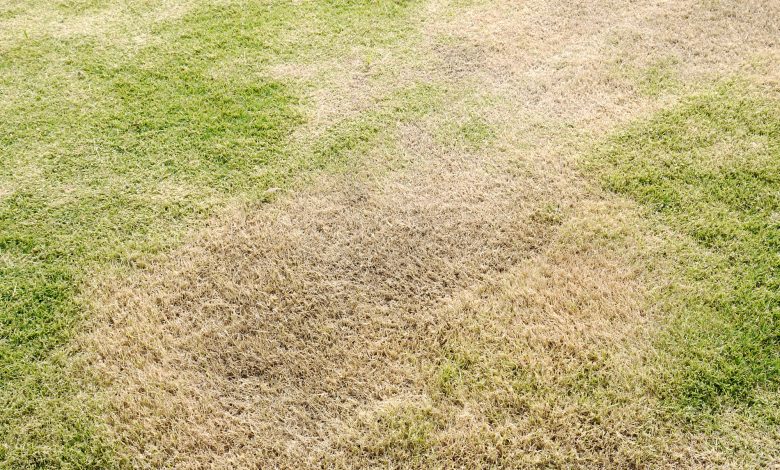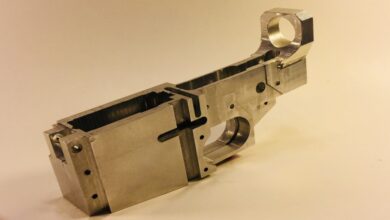How to Revive Dead Grass

It has happened to all of us at one time or another. You spend hours working on your lawn, putting the perfect nitrogen in the fertilizer, and rolling and aerating the soil. You mow and edge daily to ensure your grass is greener than your neighbor’s.
But still, it happens. It will help if you have more time or money to care for your lawn correctly or if Mother Nature intervenes in droughts or cold winters. Luckily, there is still hope.
But how do you revive dead grass? What can you do to fix it? We can help.
Identify the Cause of the Dead Grass
Before you can revive your dead lawn, it’s essential to determine what caused it to die in the first place. Lack of water, over-fertilization, soil compaction, pest infestation, and disease are some of the most common causes of dead grass.
Each of these causes requires a different approach to revive the grass. For example, if the reason is a lack of water, you’ll need to increase your watering schedule, while if the cause is soil compaction, you’ll need to aerate the soil.
Remove Dead Grass
If your grass is dead, remove it to make room for new growth. Raking or using a dethatching tool can help you remove the dead grass and any other debris. Be sure to remove as much of the dead grass as possible, as this will allow the new grass to take root more easily.
Aerate the Soil
Soil compaction can prevent water, air, and nutrients from reaching the roots of your grass. To fix this issue, you’ll need to aerate the soil.
Aeration involves creating small holes in the soil, allowing for better water and nutrient absorption. You can rent an aerator from a local hardware store or hire a professional to do it for you.
Water Regularly
Once you’ve removed the dead grass and aerated the soil, you must water the area regularly. Deep watering infrequently is the best way to ensure that the water reaches the roots of your grass. Shallow watering can lead to surface-level sources, which are more susceptible to damage.
Fertilize
A balanced fertilizer can help promote healthy growth in your grass. Be careful not to over-fertilize, as this can cause more harm than good. Always follow the instructions on the fertilizer package, and choose a fertilizer appropriate for your soil type and grass species.
Reseed or Sod
If your brown grass is beyond repair, you may need to reseed or lay down new sod. Reseeding involves planting new grass seeds where the old grass has died.
Sodding involves laying down pre-grown grass over the affected area. Choosing a grass type well-suited to your climate and soil conditions is essential.
If you need help deciding which method to choose, consult a professional landscaper or consider hiring lawn care services to help you with the process. They can provide expert advice on the best approach for your lawn and can complete the job more efficiently than you could on your own.
Don’t Let Dead Grass Bring Down Your Yard
Reviving dead grass requires effort, persistence, and patience, but the results are worth it. Experimenting with different grass types may benefit healthy lawns in the long run.
Take the time to combat the issue correctly and reap the benefits of a beautiful lawn that is the envy of the neighborhood. If you need help, contact a lawn care specialist for assistance.





Thank you for great content. I look forward to the continuation.
Very nice blog post. I definitely love this site. Stick with it!
This is my first time pay a quick visit at here and i am really happy to read everthing at one place
Very nice blog post. I definitely love this site. Stick with it! .
But wanna say that this really is quite helpful Thanks for taking your time to write this.
I appreciate you sharing this blog.Really looking forward to read more. Really Great.
Some really excellent info I look forward to the continuation.
Very nice blog post. I definitely love this site. Stick with it!
I appreciate you sharing this blog.Really looking forward to read more. Really Great.
Superb post however I was wanting to know if you could write a litte more on this topic I’d be very grateful if you could elaborate a little bit more. give me newsmax
There is some nice and utilitarian information on this site.
Excellent article! We will be linking to this particularly great article on our website. Keep up the good writing.
Thank you for great information. I look forward to the continuation.
I do not even understand how I ended up here but I assumed this publish used to be great
There is definately a lot to find out about this subject. I like all the points you made Watch bbcpersian
So great to find someone with some original thoughts on this topic. Really..
This is really interesting You re a very skilled blogger. I ve joined your feed and look forward to seeking more of your magnificent post.
Also I ve shared your site in my social networks!
Nice post. I learn something totally new and challenging on websites
very informative articles or reviews at this time.
http://lc.longboardelectrico.online/category/bdone/ – BDOne
A tecnologia está se desenvolvendo cada vez mais rápido, e os telefones celulares estão mudando cada vez com mais frequência. Como um telefone Android rápido e de baixo custo pode se tornar uma câmera acessível remotamente?
You have noted very interesting details! ps decent web site.<a href="https://www.maps.google.com.au/url?sa=i
Existe alguma maneira de recuperar o histórico de chamadas excluídas? Aqueles que possuem backup na nuvem podem usar esses arquivos de backup para restaurar registros de chamadas de celular.
You have noted very interesting details! ps decent web site.Cisco Business CBS110-8T-D Unmanaged Switch | 8 Port GE | Desktop | Ext PS | Limited Lifetime Protection (CBS110-8T-D-NA) – Hot Deals
Thank you for great information. look forward to the continuation. – hey dudes for men
There is some nice and utilitarian information on this site.
The information you shared is very valuable to me, thank you! see this
Very interesting details you have mentioned, thank you for
putting up.Blog monry